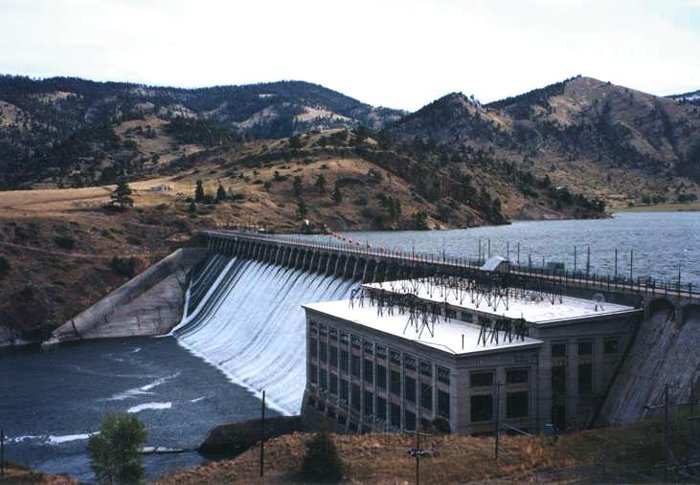Threats to Watershed Health
A stream is considered “imparied” when it is not fully supporting aquatic life and other beneficial uses. As summarized in the Total Maximum Daily Load document, there are four main categories of factors that impact the quality of water sources within the Lake Helena Watershed:
Sediment
Nutrients
Heavy Metals
Temperature
“The TMDL describes the maximum amount of any substance that a body of water can receive while still meeting water quality standards and supporting beneficial uses. ”
Sediment
Sediment can be suspended in water when it is eroded from streambanks or when it washes into a stream after a rain event. A common measure of the amount of sediment suspended in a stream is “Total Suspended Solids.” Coarse, heavy sediment particles may fall out of suspension and move along the bottom of the stream, also referred to as “bed load.” Lighter sediments may settle out of suspension during periods of low flow and come to rest on the stream bottom, or “substrate.”
Streambank erosion is an inherent and natural part of channel evolution and can contribute significant quantities of sediment to the stream based on a combination of climatic and physiographic features. However, anthropogenic impacts, such as grazing, mining, timber harvest, road encroachment, riparian vegetation removal, and/or channel alterations can result in elevated rates of streambank erosion that are no longer considered natural. These additional loads of sediment that wouldn’t normally be there can negatively impact aquatic life and other beneficial uses.
Excessive levels of fine sediments in streams in the Lake Helena Watershed can prohibit cold-water trout spawning and insect habitat, and alters stream channel morphology.
As per the TMDL document created in 2006, on average, sediment loading in the Lake Helena Watershed is about 47% above the naturally occurring level. However, in the last decade, a lot of restoration efforts have been implemented to try to reduce the amount of excess sedimentation.
Unpaved roads, barren stream banks, timber harvest, and abandoned mining are the significant sources of sediment in the watershed.
Twelve streams in the Lake Helena Watershed do not meet their full potential to support fish and aquatic life due to excessive sediment:
Clancy Creek
Corbin Creek
Jennie’s Fork
Lump Gulch
Middle Fork Warm Springs Creek
North Fork Warm Springs Creek
Warm Springs Creek
Prickly Pear Creek
Sevenmile Creek
Skelly Gulch
Spring Creek
Tenmile Creek
Nutrients
Nitrogen and phosphorous are chemical elements that promote the growth of plants and algae in streams and lakes. Nutrients are important and essential, but too much leads to overgrowth of algae and aquatic plants that eventually die. When they begin to decay, bacteria break down plant material and use up dissolved oxygen in the water. This process depletes the oxygen that was once available for other organisms such as fish, resulting in an inhabitable stream. An excess of nutrients, plant/algae blooms, and oxygen depletion is known as eutrophication. Eutrophication also diminishes aesthetics and recreational appeal of water bodies.
The amount of nutrients entering the stream will vary depending on the season.
Fertilizer runoff, leaky septic systems, wastewater discharge and storm water runoff are major sources of nutrients in the watershed. These sources include both point sources, such as sewage treatment plants, and non-point sources, such as fertilized lawns and crop fields, septic systems, livestock and other animals.
Five water bodies in the Lake Helena Watershed have excessive amounts of nitrogen or phosphorous that beneficial uses of the water bodies have been impaired:
Algae bloom in creek due to too many nutrients
Prickly Pear Creek
Sevenmile Creek
Spring Creek
Tenmile Creek
Lake Helena
Heavy metals
Metals such as arsenic, cadmium, copper, lead and zinc are also essential but very harmful to both human and aquatic life health when concentrations are too high. Metals are often toxic to fish and other aquatic biota at much lower concentrations than they are to humans.
Metals occur naturally in the rocks and soils within the watershed. However, abnormally high concentrations of metals can also be a result of a large number of exposed, historic mining sites. Exposed ore, waste rock, and mine tailings erode and can wash into streams. Other sources in the watershed include industrial operations, stormwater runoff, and effluent from wastewater treatment plants.
There are sixteen water bodies within the Lake Helena Watershed that are impaired from elevated concentrations of arsenic, cadmium, copper, lead and zinc.
Corbin Creek
Clancy Creek
Golconda Creek
Jennie’s Fork
Granite Creek
Jackson Creek
Middle Fork Warm Springs Creek
North Fork Warm Springs Creek
Warm Springs Creek
Lump Gulch
Prickly Pear Creek
Tenmile Creek
Sevenmile Creek
Silver Creek
Spring Creek
Lake Helena
Temperature
Water temperature controls the type and amount of biological organisms (fish, aquatic insects, microorganisms) in a stream. All organisms have an optimum temperature range for survival. Rates of other organic and inorganic processes are temperature-dependent as well. With increasing temperature, algae and plants increase can lead to eutrophication as discussed in the ‘Nutrients’ section. Fish populations could eventually shift from cold-water species to warm-water species.
Shade from vegetation (such as taller shrubs and trees like willows and cottonwoods) is very important in keeping water temperatures lower. Removal of trees and shrubs from stream banks increases stream temperatures. Water diversions also lead to less water in the streams in the summer months, which results in higher water temperatures.
Only Prickly Pear Creek is listed as impaired by warmer temperatures.











